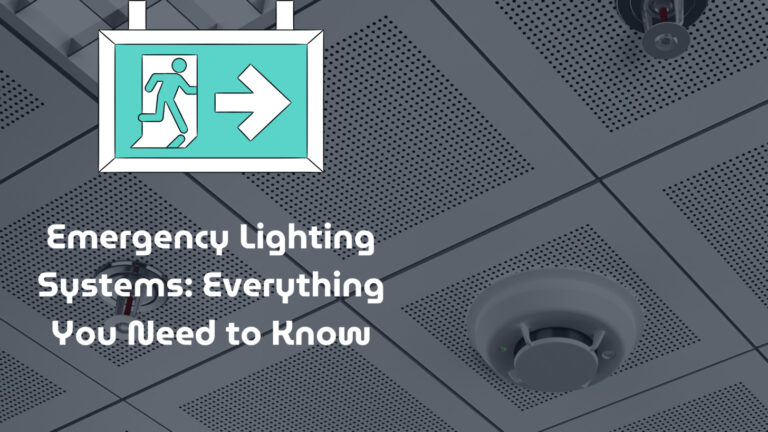
UK Lighting Design Standards and Guidelines
1. Introduction
The United Kingdom has established a robust framework of lighting design standards aimed at promoting energy efficiency, visual comfort, and environmental sustainability. Underpinned by stringent Building Regulations (Part L), ecodesign directives, and complementary standards such as BS EN 12464-1, the UK’s lighting landscape continues to evolve. This document consolidates the latest requirements, integrating recent advancements in lighting technology, design philosophy, and circular principles to serve as a valuable reference for architects, lighting designers, electrical engineers, facility managers, and contractors.
2. Evolution of UK Lighting Regulations
2.1 Part L of the Building Regulations
Part L is the principal legislative instrument governing energy efficiency in buildings, including lighting installations. Revised in 2021 and taking effect from June 2022, it is divided into four volumes:
- L1A (New Dwellings)
- L1B (Existing Dwellings)
- L2A (New Non-Domestic Buildings)
- L2B (Existing Non-Domestic Buildings)
Each volume prescribes minimum energy performance requirements and luminous efficacy thresholds, ensuring that new and refurbished lighting systems minimise energy consumption without compromising functionality or comfort.
2.2 Ecodesign Requirements
Recent amendments (2023) to ecodesign regulations raise the minimum luminous efficacy for light sources to 120 lm/W, increasing to 140 lm/W by 2027. Special allowances (e.g., a 20 lm/W concession) apply to lamps requiring high Colour Rendering Index (CRI ≥93) or specific spectral outputs for healthcare or horticultural applications. This aligns with the phased withdrawal of legacy lighting technologies across the UK, expediting the transition to LED and other high-efficiency solutions.
2.3 Emphasis on Smart Controls
Beyond efficacy, the UK regulatory framework increasingly emphasises control systems such as daylight harvesting, occupancy detection, and zonal dimming. These technologies help prevent over-illumination, reduce energy wastage, and adapt lighting conditions to user needs. Integrating such systems is rapidly becoming standard practice for both domestic and commercial projects.
3. Domestic Lighting Compliance
3.1 Minimum Efficacy Requirements (L1A & L1B)
Under Part L1A (New Dwellings), at least 75% of all fixed internal luminaires must exceed 75 lumens per circuit-watt—an increase from the previous threshold of 45 lm/W. Householders retain freedom in choosing specific lamps, as long as the overall efficacy requirement is met.
For Part L1B (Existing Dwellings), whenever re-wiring or extension work triggers compliance checks, at least three-quarters of existing fittings must be upgraded to high-efficacy alternatives (≥75 lm/W). Portable luminaires, such as plug-in floor lamps, are typically excluded from these calculations but are strongly recommended to meet or exceed similar efficacy levels.
3.2 Luminaires vs. Lamps
A key update under Part L2A (non-domestic) also influences domestic applications: the distinction between lamp lumens (raw light output) and luminaire lumens (actual delivered light after optical losses). Designers must specify luminaire-level performance, taking into account diffuser materials, lensing, and fixture design. This ensures that the declared light output closely reflects real-world conditions.
4. Non-Domestic Lighting and External Illumination
4.1 Integrated Control Systems (L2A & L2B)
Part L2A (New Non-Domestic Buildings) mandates more sophisticated control solutions to achieve compliance, including:
- Daylight Harvesting: Photo-sensors reduce electric lighting when daylight exceeds a set threshold (commonly 300 lux).
- Occupancy Detection: Corridors, storerooms, and other intermittently occupied areas must include occupancy or vacancy sensors with adjustable time delays (up to 15 minutes).
- Task Tuning: Zonal or individual fixture control allows dimming between 20–100% output in open-plan offices or production floors, aligning light levels with task requirements.
For Part L2B (Existing Non-Domestic Buildings), similar principles apply during refurbishments or retrofits, although specific targets may vary based on building type and scope of work.
4.2 External Lighting and Ecological Considerations
External lighting must balance safety and security with environmental stewardship. The UK’s planning guidance often stipulates:
- Maximum Light Trespass: Boundaries adjoining residential areas typically must not exceed 1.0 lux, with certain authorities recommending as low as 0.5 lux to protect nocturnal wildlife.
- Full-Cutoff Optics: Luminaires should have an upward light ratio (ULR) of no more than 1%, preventing unnecessary skyglow.
- Hierarchical Illumination Strategy: Core zones (e.g., main entrances) may have up to 5.0 lux, while buffer zones and darker corridors preserve habitat integrity and minimise disturbance to surrounding environments.
Increasingly, local authorities also require external lighting to include adaptive or time-based controls (e.g., switching off decorative façade lighting after 23:00).
5. Technical Specifications and Workplace Standards
5.1 BS EN 12464-1 Integration
For indoor workplaces, the UK adopts BS EN 12464-1, which outlines task-specific lighting requirements to ensure comfort, safety, and efficiency. Below is a properly formatted table summarising key parameters:
| Application | Illuminance (lux) | Unified Glare Rating (UGR) | CRI / Colour Rendering |
|---|---|---|---|
| Archives | 200 | 19 | ≥80 |
| CAD Workstations | 750 | 16 | ≥90 |
| Surgical Suites | 1,000 | 10 | ≥95 |
| Packaging Lines | 300 | 22 | ≥70 |
Note: Peripheral areas should receive at least 30% of the task illuminance within a 0.5m radius of the workstation to maintain overall visual consistency.
5.2 Material and Spectral Considerations
- Correlated Colour Temperature (CCT): Residential and hospitality areas often specify 2700K–3000K to reduce blue-light content, improving comfort and circadian alignment.
- Flicker Suppression: LED drivers must maintain a sufficiently high frequency (e.g., ≥120 Hz) to mitigate potential flicker-related issues, especially in sensitive environments like healthcare.
- Temporal Curfews: Non-essential exterior or decorative lighting should be switched off during late-night hours (e.g., 23:00–05:00) to minimise light pollution and energy usage.
6. Future Directions: Smart Systems, Sustainability, and Circular Design
6.1 Emerging Smart Technologies
- Adaptive Circadian Lighting: Systems dynamically adjust intensity and spectral output throughout the day, providing high-intensity, cooler CCT in the morning (e.g., 6500K at 400 lux) and warmer, dimmer light in the evening (e.g., 2700K at 150 lux) to align with natural biological rhythms.
- Real-Time Monitoring and Analytics: Internet of Things (IoT)-enabled luminaires offer data on occupancy, temperature, and energy consumption, enabling facility managers to optimise lighting strategies.
6.2 Circular Lighting and Recyclable Materials
The UK’s net-zero carbon goals align with an emerging emphasis on circular design. Luminaires are increasingly required to feature:
- High Recyclability: Products containing at least 95% recyclable content by mass.
- Modular Components: Tool-less access to drivers and LED boards, facilitating straightforward upgrades or replacements.
- Low Environmental Impact Materials: Bamboo or other sustainable composites for diffusers, and snap-fit aluminium frames without adhesives for easy disassembly.
Lumenloop, as a circular lighting manufacturer, integrates these principles into its designs, prioritising longevity, repairability, and end-of-life material recovery.
7. Compliance and Enforcement Mechanisms
7.1 Building Control Pathways
- Competent Person Scheme: Registered electricians can self-certify compliant installations, expediting approval without reducing rigour.
- Post-Occupancy Testing: Particularly in non-domestic retrofits (L2B), at least 10% of installed luminaires undergo luminance scanning to confirm that specified illumination levels and glare control targets are met.
7.2 Penalties for Non-Compliance
Failing to meet Part L requirements can incur substantial fines, ranging from £5,000 for residential projects to £50,000 for large-scale commercial developments. Persistent offenders risk Prohibition Notices, which halt construction or occupancy until deficiencies are corrected.
8. Lumenloop’s Commitment to Circular Lighting
Lumenloop stands at the forefront of sustainable lighting manufacturing, aligning with and often surpassing UK regulatory standards:
- Design for Disassembly: Our luminaires are engineered for easy maintenance, repair, and eventual recycling.
- Energy Efficiency and Innovation: Through cutting-edge LED technologies, integrated controls, and advanced optics, we help reduce energy consumption while maintaining high-quality illumination.
- Research and Collaboration: We actively partner with industry bodies, standardisation committees, and research institutions to ensure our solutions reflect the latest insights and best practices.
9. Conclusion
The UK’s lighting design standards and guidelines continue to evolve, reflecting a balance of technical rigour, user wellbeing, and ecological responsibility. By integrating Part L Building Regulations, ecodesign directives, and BS EN 12464-1’s ergonomics, the country is on track to significantly reduce lighting-related energy consumption.
For specifiers—staying abreast of these requirements is essential to delivering safe, efficient, and sustainable lighting environments. Lumenloop remains committed to facilitating this transition, offering circular, future-proof solutions that not only meet but exceed current standards.
Key Takeaway: Embracing higher luminous efficacy, smart controls, and sustainable product design is critical to achieving compliance and future-proofing your projects. With the UK targeting net-zero carbon emissions by 2050, these measures are not just regulatory obligations but also ethical imperatives for the built environment.
Lighting Tools
Lighting Design Blog

The Neuroscience of Light
Discover the neuroscience of light with our ultimate guide. Learn how lighting impacts human behaviour and wellbeing, and optimise your lighting design for better outcomes.

Recessed Office LED Panels: Clean & Professional Lighting Finishes
Discover our range of LED recess‑mounted office panels, designed for clean and professional lighting finishes in commercial spaces.

Find the Best LED Emergency Bulkhead Light for Your Building (With Real Product Examples)
Discover the best emergency bulkhead light for your building with our comprehensive buyer’s guide. Learn how to choose the right one for your needs.

The Best Commercial Downlights in the UK (With Real Examples)
Get the best commercial downlights UK for your facility. We provide top-rated products, practical advice, and real examples to enhance your lighting.

Emergency Lighting Systems: Everything You Need to Know
Discover everything you need to know about emergency lighting systems, including installation, maintenance, and compliance with UK regulations. Stay safe and compliant.

Wall-Mounted LED Emergency Lights That Work When It Matters
In 2025, UK facilities are under more pressure than ever to meet safety standards, save energy, and reduce waste. The right emergency lighting plays a